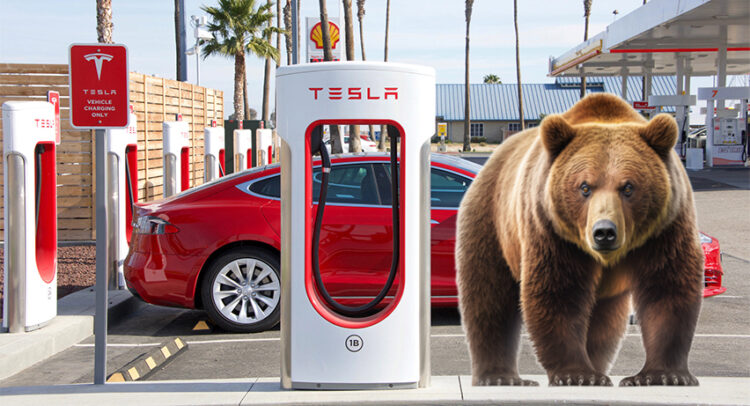
Tesla’s Troubled Start to 2025: A Storm Brewing?
Tesla, the electric vehicle giant, has experienced a significant downturn in its stock price, plummeting by 36% at the close of the first quarter of 2025. This sharp decline has left investors and analysts questioning the company’s future trajectory and prompting speculation about the underlying causes. The market’s anxiety is palpable, particularly as the eagerly awaited Q1 delivery figures loom large.
The substantial drop in Tesla’s share price represents a considerable blow to investor confidence. While various factors could contribute to this decline, the upcoming release of the company’s first-quarter delivery numbers is widely seen as a pivotal moment. These figures will offer a crucial insight into the actual demand for Tesla vehicles, a key metric for assessing the company’s overall performance and future growth potential. A shortfall in deliveries compared to analysts’ expectations could trigger further negative market reactions.
Beyond the immediate concern over delivery numbers, several other factors could be contributing to Tesla’s current predicament. Increased competition within the burgeoning electric vehicle market is undoubtedly a significant challenge. Numerous established automakers and new entrants are aggressively pushing their own electric models, intensifying the battle for market share. Tesla, once a dominant force, now faces a more crowded and competitive landscape.
Economic headwinds also play a significant role. Global economic uncertainty, inflationary pressures, and rising interest rates could dampen consumer spending, potentially impacting the demand for luxury electric vehicles like Tesla’s. Consumers might be more hesitant to make significant purchases, particularly discretionary ones, in a less stable economic environment.
Furthermore, Tesla’s overall brand perception and public image might be influencing investor sentiment. Recent controversies, whether related to production issues, safety concerns, or CEO Elon Musk’s public statements, can erode confidence and lead to negative press coverage, further impacting the stock price. The market is always sensitive to such factors, and negative narratives, even if unsubstantiated, can affect investor behaviour.
Looking ahead, the upcoming Q1 delivery report is more than just a quarterly update; it’s a critical barometer of Tesla’s health and future prospects. The market is bracing for the release of this data, as it will likely shape the narrative surrounding the company in the coming months. A strong showing could restore some investor confidence and potentially reverse the current downward trend. However, disappointing numbers could exacerbate the existing concerns, potentially leading to further stock price declines.
Many investors are adopting a “wait-and-see” approach, closely scrutinizing the Q1 delivery data before making any significant investment decisions. The upcoming report is a critical test for Tesla, and its impact on the company’s valuation and future trajectory is likely to be substantial. The coming weeks will be crucial for Tesla as it navigates this period of market uncertainty and strives to regain investor trust. The challenge lies in demonstrating not only its ability to deliver vehicles but also to address the broader concerns about its market position and overall strategic direction.



Leave a Reply